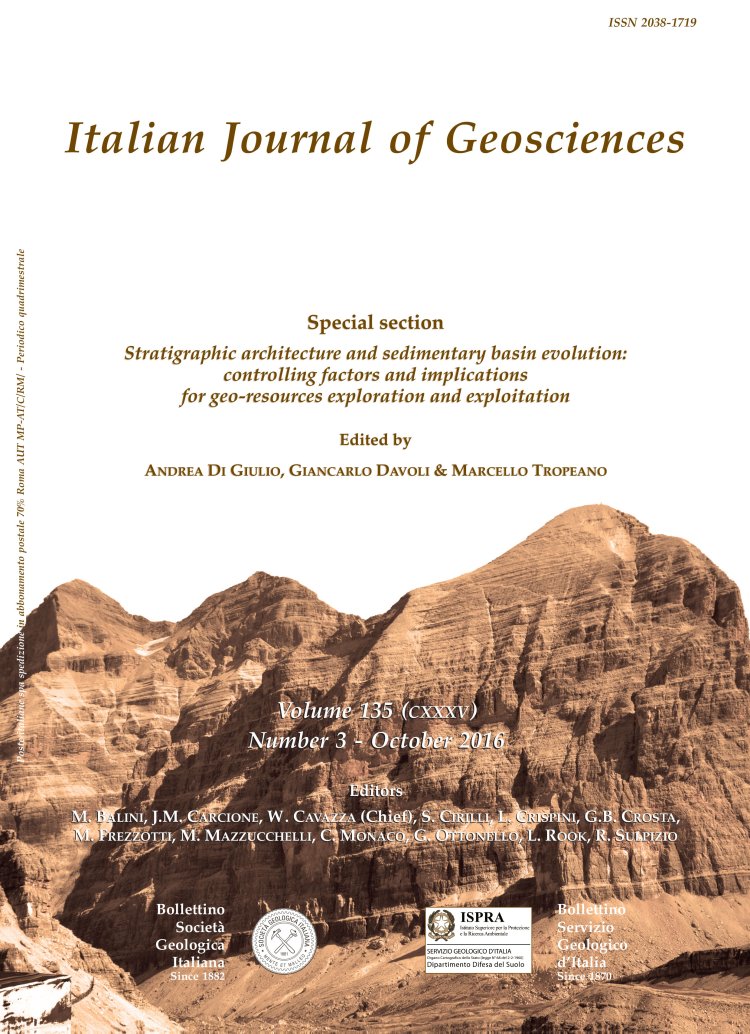
Biostratigraphy, chronostratigraphy and paleonvironmental reconstruction of the Palermo historical centre Quaternary succession
Alessandro Incarbona (1*), Antonio Contino (1), Mauro Agate (1), Sergio Bonomo (2), Federico Calvi (3), Enrico Di Stefano (1), Maria Stella Giammarinaro (1), Attilio Priulla (1) & Rodolfo Sprovieri (1)
(1) Università degli Studi di Palermo, Dipartimento delle Scienze della Terra e del Mare, Via Archirafi 20-22, 90134 Palermo, Italy.
(2) Consiglio Nazionale delle Ricerche, Istituto per l'Ambiente Marino Costiero, Calata Porta di Massa, Interno Porto di Napoli, 80133 Napoli, Italy.
(3) Regione Siciliana, Dipartimento del Territorio e dell'Ambiente, Via Ugo La Malfa 169, 90146 Palermo, Italy.
*Corresponding author: e-mail: alessandro.incarbona@unipa.it; phone: +39 09123864648
Volume: 135 (2016) f.3
Pages: 512-525
Abstract
Marine deposits from the Palermo Plain were historically relevant for the Quaternary Period definition. Here we show lithostratigraphic, biostratigraphic and chronostratigraphic data collected on three boreholes in the Palermo historical centre that recovered 36.8, 42.0 and 52.0 metres of sediments overlaying the Numidian Flysch. Marine sedimentary sequences span from the Calabrian Stage (calcareous nannofossil Zone MNN 19d) to the Middle Pleistocene (dominance of medium-sized gephyrocapsids within the MNN 19f Zone) and also include a short Holocene depositional event. Calcareous nannofossil, benthic and planktonic foraminifera assemblages point to a shallow coastal environment, possibly < 50 m deep. This study highlights the need of a modern and reliable stratigraphic interpretation of lithotypes, to identify stratigraphic gaps and to draw deep geological structures in an area extremely vulnerable to seismic and hydrogeological hazard.
Keywords
Get Full Text